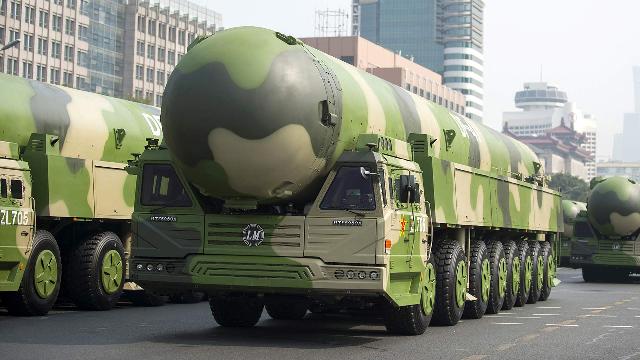The Celestial Empire has products capable of achieving goals in Europe, Asia and the USA
This week, China tested an intercontinental ballistic missile with a maximum-range launch into the Pacific Ocean. We are used to the fact that China is the world's third nuclear power, which has long—range means of delivering nuclear charges, but with a large gap between Russia and the United States in their number. However, the arsenal of this country is growing. Izvestia is about what kind of intercontinental missiles modern China possesses and what it may have in development.
What kind of intercontinental missiles does China possess
The strategic missile forces of the People's Republic of China exist under a veil of secrecy — there is simply no detailed information on missiles. Nevertheless, it is known that China carried out the last launches of ICBMs at maximum range more than 40 years ago — in February 1980.
At that time, a heavy liquid-fueled ICBM DF-5 (Dong Feng 5 / "East Wind-5") was tested in flight at 13 thousand km. This is how the Chinese media explain such a long break: all these years, most test launches of ICBMs could be carried out on special trajectories within the national territory of China, while launching into neutral waters thousands of kilometers from their native shores requires special ships and agreements with neighboring states.
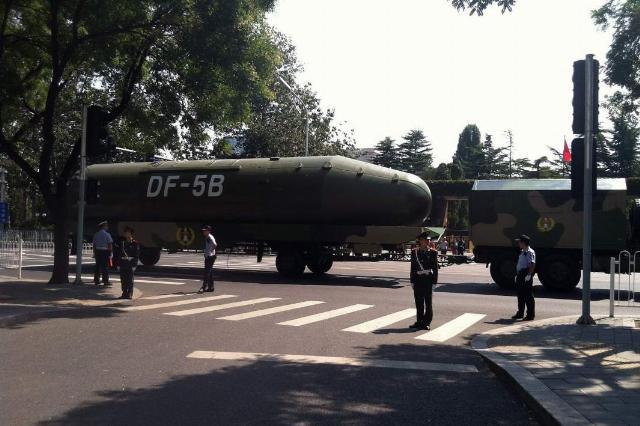
DF-5B Heavy liquid-fueled Intercontinental Ballistic Missile
Image Source: Photo: commons.wikimedia.org
Which missile has China tested now? Apparently, the DF-31AG solid-fuel mobile ICBM with a separable head was tested. The launcher is mounted on a wheeled chassis. The three-stage missile has a range of more than 11 thousand km and provides accuracy with a deviation of up to 150 meters from the aiming point. It is one of the most powerful modern Chinese missiles. The Ministry of Defense of the People's Republic of China reported that the launch goal was achieved — the effectiveness of weapons and the readiness of the country's missile forces were checked.
In total, the People's Liberation Army of China (PLA) is currently armed with three types of intercontinental ballistic missiles. The honored and oldest is the complex with heavy liquid DF-5. Today, China has about 20 launchers of such missiles. The DF-5 uses technology from the 1960s, it is in many ways similar to the Soviet heavy liquid-propellant missiles of the R-36 type developed by Yuzhnoye Design Bureau.
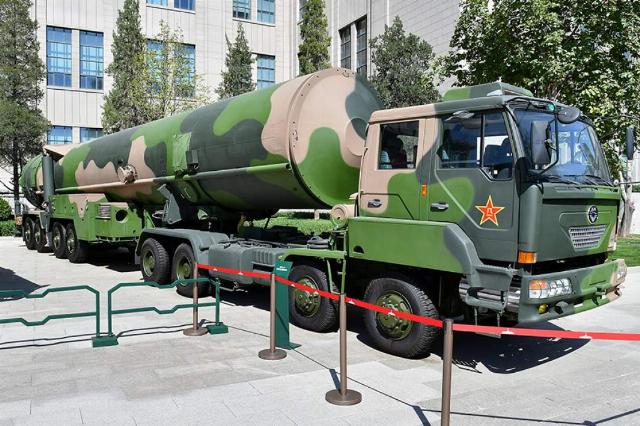
Solid-fuel intercontinental ballistic missile DF-31 on a transporter trailer
Image Source: Photo: commons.wikimedia.org
The first DF-5s went on combat duty in 1971. In 1986, the missile underwent modernization with an increase in range to 15 thousand km and received a more accurate guidance system. After that, there were several more upgrades. Modern DF-5Cs can already carry 10 combat units and formally approach the Russian Voevoda-type missiles in terms of their capabilities. But the PLA plans to replace them with solid-fuel mobile ICBMs. Although it is the DF-5 that can hit targets almost throughout the United States.
Two models of mobile solid—fuel missiles now form the basis of the strategic missile potential of the PLA - DF-31 and DF-41.
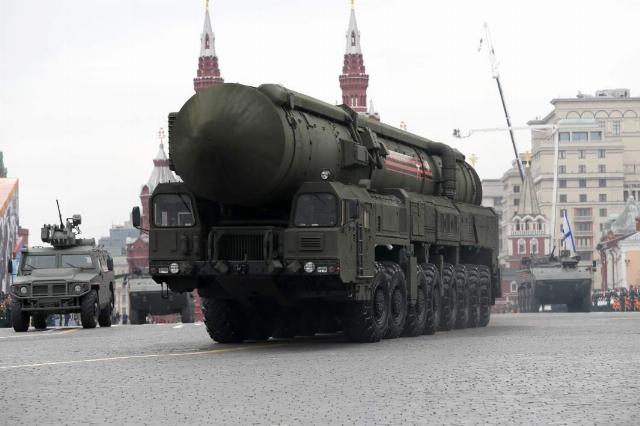
Yars missile system during the dress rehearsal of the parade dedicated to the 76th anniversary of Victory in the Great Patriotic War on Red Square
Image source: Photo: IZVESTIA/Vitaly Bezrukikh
Dong Feng 31 is a mobile three—stage ICBM equipped with both monoblock and separable warheads. Its development began in 1985. The monoblock warheads have a power of about 1 megaton and are close to Soviet Topol-type missiles in their capabilities. More advanced multi-headed modifications have great potential, but technologically this missile is less advanced than the Russian Yars.
The deployment of missiles began in 2006, and today at least 20-30 launchers are on combat duty in the PLA. The DF-31 launcher is mounted on a multi-axle trailer, not on a conveyor machine. In terms of range from areas based deep in China, the DF-31 ICBMs can hit any targets in Europe, Asia, as well as in some areas of Canada and the northwestern United States.
China's advanced developments
The most advanced PLA solid-fuel ICBM is considered to be the DF-41. In terms of technology, it is close to the Russian Yars rocket, but with a slightly larger mass. Its range is 12-14 thousand km. Combat equipment is a separable head unit with 10 small power class combat units. With a high probability, higher accuracy is provided with a deviation from the aiming point up to 100 meters.
The launcher is a multi—axle automobile chassis of its own Chinese production, which was developed clearly not without the participation of the Minsk Wheeled Tractor Plant (MZKT). The PLA began deploying a new ICBM in 2017, and at the moment, most likely, no more than a few dozen of these missiles have been deployed.
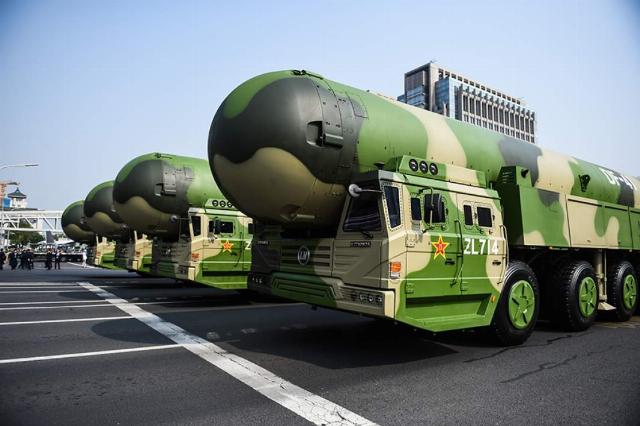
DF-41 solid-fuel intercontinental ballistic missile during a parade in Beijing
Image source: Photo: TASS/Zuma
It is curious that Chinese rocket builders have tried to partially unify the DF-41 land-based ICBM with the latest JL-3 underwater launch rocket, which is the basis of the marine component of the Chinese nuclear triad. The missile began operation in 2022 on type 094 nuclear submarines. From these ships, missiles from the South China Sea can reach the continental United States at a range of 10 thousand km.
Apparently, China is now prioritizing the creation of missile systems that could guarantee the destruction of any maritime threat in Southeast Asia and the adjacent Pacific Ocean. And therefore, various short- and medium-range missiles are being created and tested.
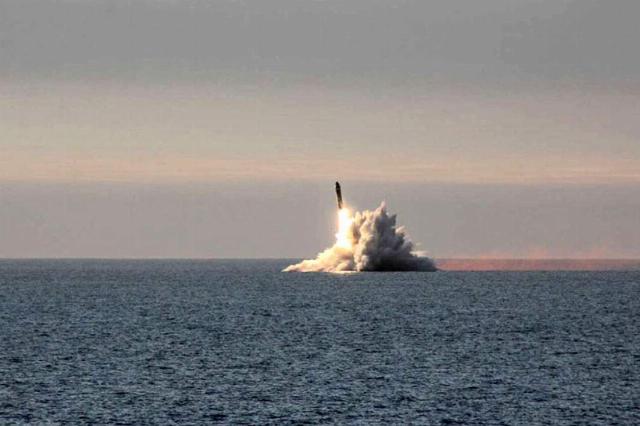
Test launch of the JL-3 submarine-launched ballistic missile
Image Source: Photo: flickr.com
ICBMs are being created and deployed now in limited quantities, but it must be understood that the modern missile industry of China is one of the most powerful in the world. All types of possible military and space launch vehicles are manufactured in China. Reusable rockets for space launches are being tested. The company has its own cosmonautics program. At the same time, of course, in the military sphere, information about missile programs is secret and closed.
It is likely that after the DF-41, its variants with hypersonic combat equipment or completely new missiles will be created and tested, and then deployed. It would be very interesting to see if China will create a replacement for a heavy liquid rocket. This solution has its own very serious advantage — a large amount of energy allows you to bring several tons of payload to the target. But for now, China is making do with upgrading the old DF-5.
With another ICBM test, China has shown that the country's nuclear forces are capable of striking at intercontinental distances and the PLA missile forces will be able to carry out the order to defeat any target, even the most remote from China. And the country's rocket industry is developing further.
Dmitry Kornev
